What is Tesla Turbine? The Tesla turbine was provided by Nikola Tesla. It’s a particular type of turbine which doesn’t have any blades. Unlike other types like Kaplan, this device has limited and special applications. But because of its design considerations, it is one of the versatile devices. Its invention has led to several major engineering cases. It operates based on the principle of boundary layer effect, where based on the airflow the turbine spins. The best aspect of this device is it can obtain an efficiency of up to 80%. Its velocity range can be reached up to the rate of 80,000 rpm for small-rated instruments. Particularly, this device cannot be used in power plant applications but can be employed for general cases like pumps, etc.
What is Tesla Turbine?
Definition
The Tesla turbine was invented by none other than Nikola Tesla in 1913. It employs the boundary layer phenomenon rather than the fluid impinging on the surface of blades. It’s a low-torque high-rpm motor. Thus, applications can be somewhat restricted in the common sense of what we think of as uses for other devices. However, Tesla himself envisioned employing them in vehicles and other highly practical cases.
History
Dr. Nikola Tesla is most renowned for his work with alternating current (AC) type of power, but did you know that in 1913, he also invented a bladeless form of turbomachinery? The Tesla Turbine was created while he was attempting to create a lightweight engine to power his ultimate aim of producing a “flying machine.” Multiple-disk, friction, shear-force, and boundary layer turbomachinery are all terms employed to describe the Tesla-type turbines.
Tesla showed off a small device that generated 110 hp and was “the size of a derby hat” in an article written in 1912. The article presented the diagram below to show off how small it was.
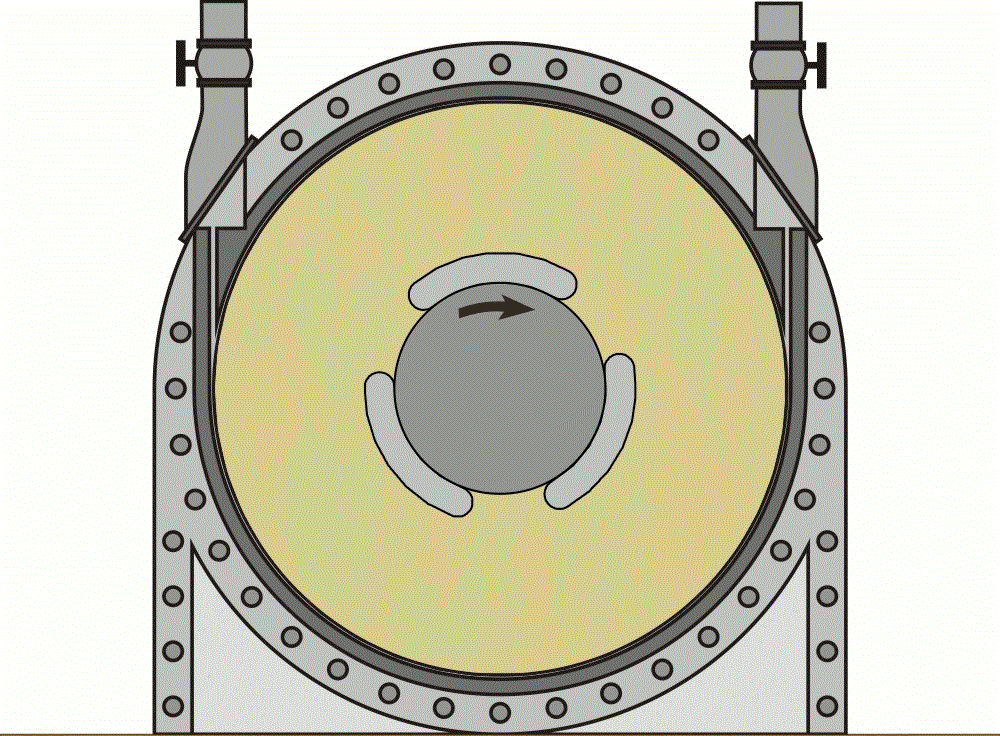
It had one stage, ran at 9,000 rpm, utilized 38 lbs of saturated steam per hp hour, and had a steam pressure of 125 lbs at the entry. By compounding, Tesla claimed he could get it down to eight pounds per hp hour. His new design employed two common fluid qualities, viscosity, and adhesion, to move several flat steel disks arranged closely on a shaft, lowering turbine efficiency.
The rotor and disks are encased in housing when used as a turbine, and the fluid is injected at the disk’s edge through nozzles. Due to viscosity and adhesion, the injected fluid spirals inward over the disk, forcing it to revolve. In the following, the fluid exits through sections around the shaft. The fluid is pumped in through the holes near the shaft and spirals outward over the disks if used as a pump or compressor. It finally exits the rotor through a diffuser, such as a volute scroll.
Tesla emphasized the simplicity, cost-effectiveness, and serviceability of his innovative design. It’s also possible to run it in either direction, which is really cool. Tesla also exhibited a small pump powered by a 1.5 hp electric motor that pumped 40 gallons of water per minute against a 9-foot head during that interview in 1912.
So, what happened? Yet, all concepts of engineers designing are bladed pumps and turbines for the users. The main problem is that Tesla’s goal of 95 percent efficiency was never attained. Despite almost a century of effort, this style of design has only a few applications. A lack of real data is part of the problem. As a result, determining the exact efficiency of a Tesla turbine is a bit of a moving target.
Professor Warren Rice provided an article at the International Tesla Symposium in 1991 about Tesla’s turbomachinery. His paper studies the Tesla Turbine’s research and commercial use up to that moment. But there aren’t many.
Despite its apparent simplicity, the Tesla turbine design appears to have some severe engineering problems. While it operates, the efficiencies are not better than the bladed designs, and in some conditions, are much worse. The efficiency of the rotor is great, but the wastes caused by the nozzles and diffusers are required to reduce it dramatically. To see its performance, check out this video.
Highly viscous or abrasive working fluids appear to be the best features. They might be used to capture geothermal energy, according to Tesla. Professor Rice’s research gives several intriguing insights, such as how this type of design avoids cavitation and is very quiet. “That got me thinking about submarines or aerospace uses, but I couldn’t discover any references to this type of turbine being employed in those situations,” Rice says. Rice also mentions that new materials like ceramics may make the design more feasible in the future.
Tesla Turbine Diagram
The Tesla turbine’s basic structure is presented in the diagram below. It comprises a bladeless turbine with an air pipe nozzle as the input. The turbine’s body includes two air inlets and outputs, one for entering air and the other for departing air. Apart from that, the rotating disc is made up of three to four layers that are mounted together. Between the layers, there is a thin air gap through which the air is moved at a very high speed.
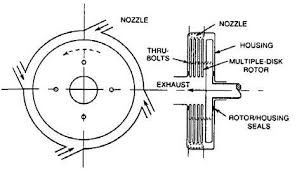
Outface and rear-face are the two faces of the rotating disc. There is no gap for air to flow outside the turbine body in either case. The inlet pipe is the single way for air to enter and the outlet pipe is the only way for air to exit. The turbine body is made up of numerous disk rotors that are connected. All of the rotor discs are connected by a single shaft that allows the disc to spin.
The disks will be placed in the outer housing. Bolts are typically used to join the discs. The exhaust output ports on the front-end and rear-end of the turbine body allow air to exit the turbine body. The holes are positioned in such a way that a vortex of inlet air is produced.
Tesla Turbine Theory
Air is the input to the rotor blades at high pressure. The air is made entry into the structure which consists of rotor disks that are set on the shaft and can be simply rotated using an air hose, which is attached to the inlet of the turbine. Once the air enters the turbine housing, it is forced to produce a vortex because of the shape of the turbine.
A vortex is a swirling mass of air similar to that found in a whirlpool or whirlwind. The air can rotate at extremely high speeds due to the production of a vortex. Because of the turbine’s design, the creation of a vortex is critical. The front and rear cover bodies of the turbine are positioned in such a way that air must exit through the holes in the front and rear covers.
The exit of air in this environment forms an air vortex. This forces the turbine to spin. When air molecules pass across the disk, they cause it to drag. This drag can lead the turbine to rotate by pulling it down. It’s worth noting that the turbine can spin in either direction. It simply relies on the type of air inlet pipe used.
Tesla Turbine Design
Two inlet pipes are used in the design, one of which is connected to the air hose pipe. Anyone can utilize one of the two inlets as input. The rotor disks are mounted inside the body and are connected by bolts. All of the discs are joined to the outer body by a single common shaft.
If it’s being used as a pump, for example, the shaft is connected to the motor. A thin air gap exists between the discs, through which air flows and causes the discs to spin. The air molecules can drag on the disc due to the air gap. The input air can be passed to the atmosphere through 4-5 holes in the front and rear covers. The holes are positioned in such a way that they generate a vortex, allowing the air to circulate at a high rate.
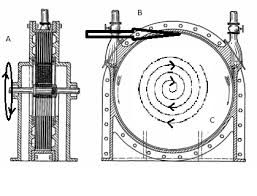
This high-speed air creates a high-speed drag on the disc, causing it to spin at extremely high rates. The disc gap is one of the most important designs and efficiency characteristics for a turbine. The ideal gap size for maintaining the gap layer is determined by the disc’s peripheral velocity.
Tesla Turbine Design Calculations
Many design aspects are essential to obtain high efficiency. Some of the main design calculations are as the following:
The pressure of the working fluid or the inlet air must be kept to a minimum level. If it’s water, the pressure should be at least 1000 kg/m3. A peripheral acceleration of 10e-6 m2/s is required.
The disc’s angular velocity and peripheral velocity are used to compute the gap between them. It is determined by the pollhausen parameter, which is based on velocities constantly. The flow rate of each disk is derived by multiplying its cross-sectional area by its velocity. The number of discs is estimated based on the data. The diameter of the disc, once again, is critical for good efficiency.
Tesla Turbine Efficiency
The ratio of output shaft power to input shaft power determines efficiency. It’s written like this:
{\eta }_{Turbine}=\frac{{W}_{Shaft}}{{W}_{Water Horsepower}}=\frac{\omega {T}_{Shaft}}{\rho gHv}
The efficiency is determined by a variety of elements, including the shaft diameter, blade speed, blade number, load attached to the shaft, and so on. In comparison to other conventional turbines, the turbine efficiency is often high. Efficiency can potentially approach 97 percent for small applications.
Tesla Turbine Working Principle
The Tesla turbine is based on the boundary layer idea. It is made up of two inlets. In most cases, water or air is employed as the turbine’s inlet. The turbine body is made up of rotor disks that are attached with bolts. The disks are all connected by a common shaft. The front casing and the rear casing are the two cases that make up the turbine body. There are 4 by 4 holes in each case. All of these elements, such as the number of disks and disk diameter, have a part in determining the turbine’s efficiency.
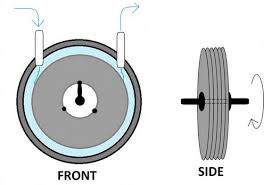
The air enters the turbine body when it is allowed to flow through the hose pipe. Discs that are connected to each other are arranged inside the turbine body. The discs are separated by a small air gap. The discs are dragged by the air molecules as they enter the turbine body. The discs begin to rotate as a result of the drag.
The front and rear casings have holes in them so that air may enter and exit via them. The holes are set in such a way that a vortex of air or water forms within the disc body. As a result, the discs are subjected to additional drag from the air. The discs spin at an extremely fast rate as a result of this.
At low speeds, the amount of contact between the vortex and the discs is small. However, when the air speeds up, this contact increases, allowing the discs to spin at a very rapid rate. The discs’ centrifugal force tries to push the air outwards. Nevertheless, other than the openings in the front and rear casings, the air has nowhere to go. As a result, the air exits, and the vortex grows stronger. The discs’ rotational speed is nearly identical to the airflow’s rotational speed.
Advantages of Tesla Turbine
The advantages of the Tesla turbine are:
- Production cost is less
- Very high efficiency
- Can be rotated in both direction
- Simple design
Disadvantages of the Tesla Turbine
The disadvantages of the Tesla turbine are:
- For high efficiency, the flow rate must be small
- Efficiency depends on the inflow and outflow of the working fluids.
- Not feasible for high power applications
Applications of Tesla Turbine
The Tesla turbine has some applications due to its output power and specifications. Some of them are summarized below.
- Vane type turbine applications
- Compression of liquids
- Pumps
- Blood pumps
As a result, we’ve seen how Tesla turbines are built, how they work, how they’re designed, and how they’re used. Its main disadvantage is that, because it is compact and modest in size, it has fewer usages than the traditional turbines such as the Kaplan turbine. Because of its high efficiency, it is necessary to consider how Tesla turbines can be used in large-scale applications such as power plants. That would be a huge help to the plants that aren’t very efficient.
Conclusion
The Tesla turbine, despite its inefficiencies, has several advantages. Disks have cheaper production costs than blades, and their overall design is simpler and easier to construct. In addition, the turbine can handle a wide range of fluids without causing significant harm to the disks. Mixtures of solids, liquids, and gases, as well as viscous and non-viscous fluids, Newtonian and non-Newtonian fluids, are all examples.
The turbine’s fluid flow can also be reversed into a pump, and the disks don’t suffer from the cavitation problems that bladed turbines do. These characteristics suggest that geothermal steam and particle-laden industrial gas could be used to generate electricity. Blood pumps and wind turbines are two more possible applications. Even though the Tesla turbine has yet to be demonstrated to be more efficient than standard turbines, there are still applications for it.
Read More In Linquip

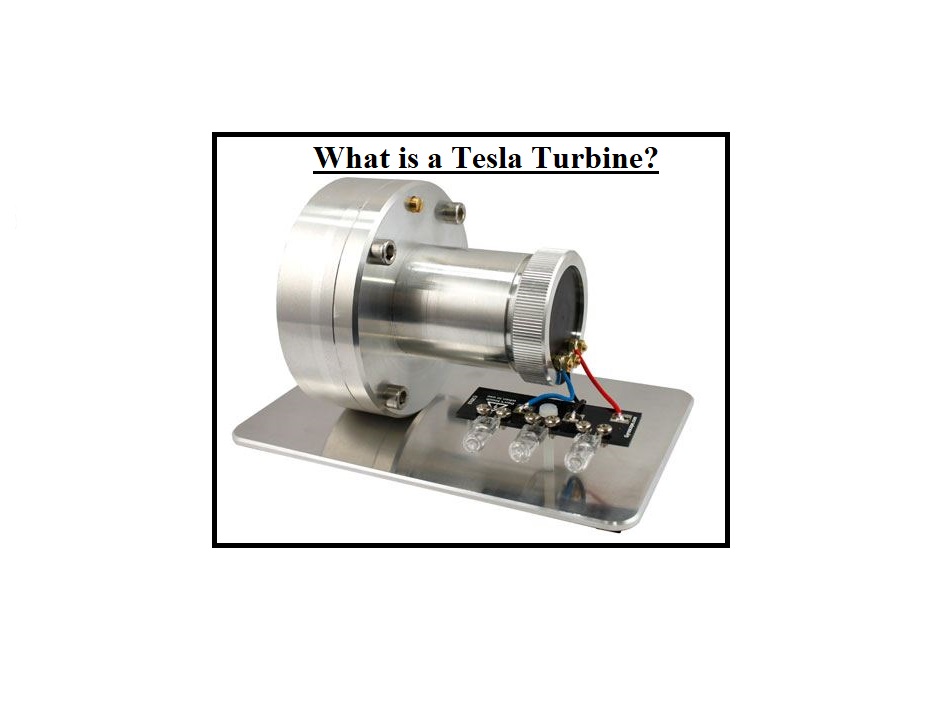


You are Ignorant of the Truth of the Power of the Tesla Turbine.
The Tesla Turbine is what Runs the Niagara Falls Hydro Electric Power Plant with an output of 2,525 MW per hour! That is quite a Large Volume of water to make that power!
Please learn everything about a technology Before You Limit it’s Production!
Thank you!
Thanks for visiting our website, Pastor! We first apologize for any inconvenience experience you had with this article. Your valuable comment will be considered for the next update of the post.